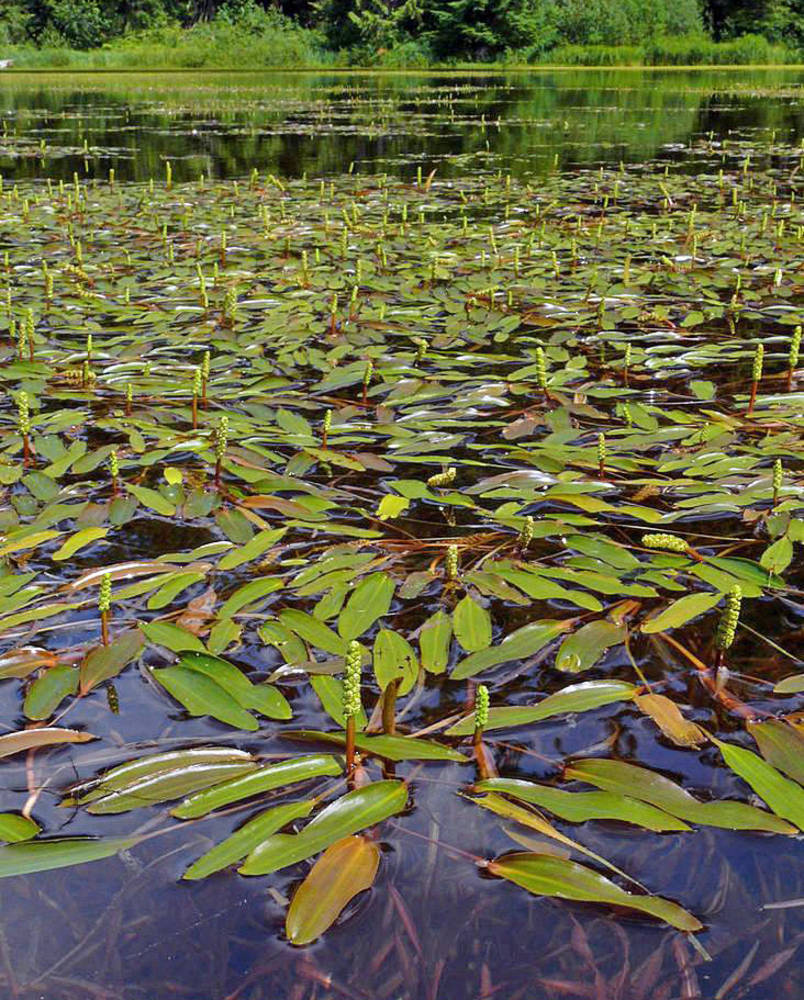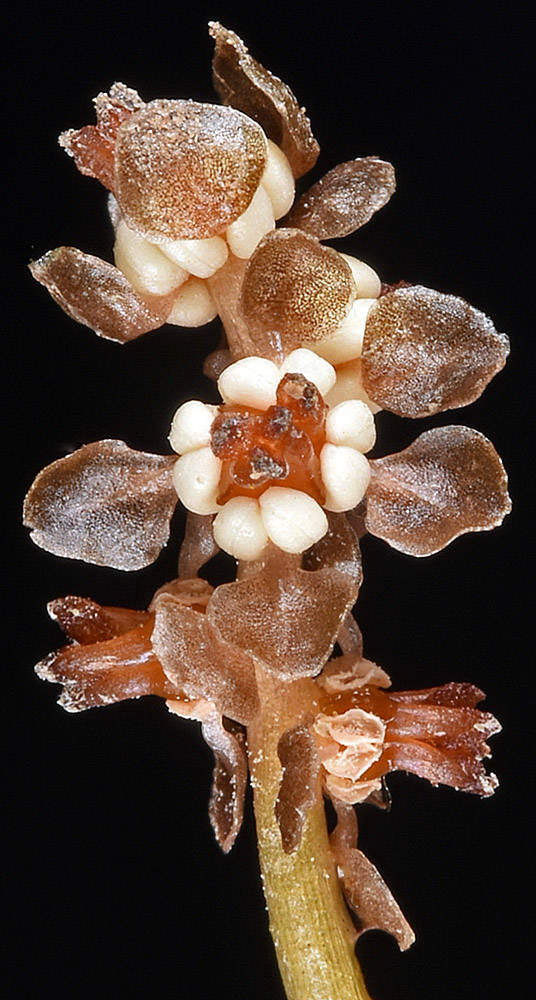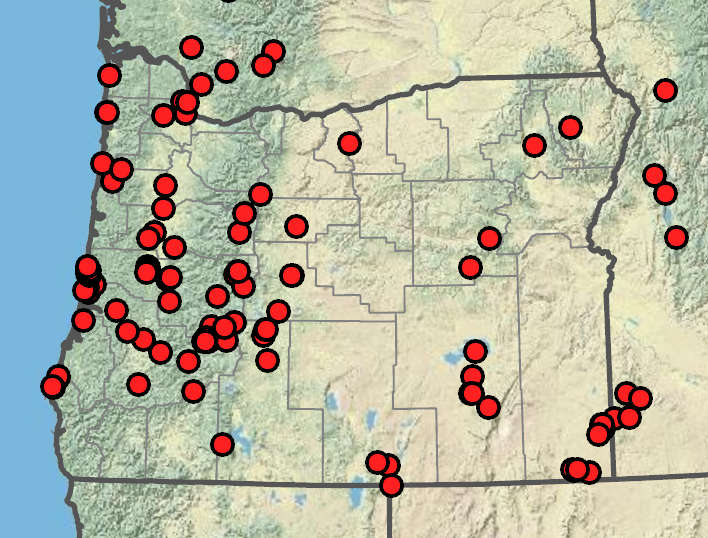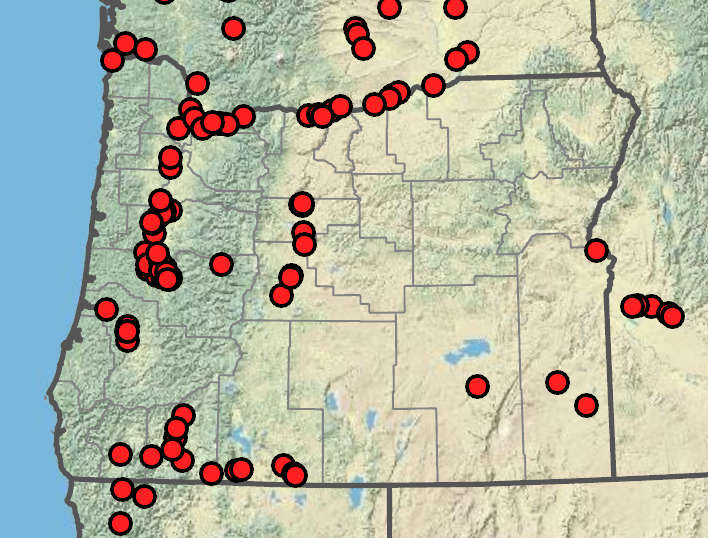Potamogeton epihydrus
Potamogeton crispus
ribbon-leaf pondweed, ribbon-leaved pondweed
curled pondweed
flattened, 10–90 cm; nodal glands absent.
flattened; to 100 cm; nodal glands absent.
submersed and floating or submersed only.
submersed, sessile, attached to stem nodes, not attached to stipules;
stipules persistent to deliquescent; to 0.5 cm;
tip obtuse;
blades linear, 12–90 × 4–10 mm;
base obtuse to rounded, not to slightly clasping;
margins conspicuously serrate; wavy;
tip round to acute; lacunae in 2–5 rows on each side of midrib;
veins 3–5.
narrowly oblanceolate to elliptic, 20–80 × 4–20 mm;
base acute;
tip rounded or bluntly cuspidate;
veins 11–41;
petioles 20–125 mm.
sessile, attached to stem nodes, not attached to stipules;
stipules 10–30 mm;
tip obtuse;
blades linear, 50–220 × 1–10 mm;
margins entire;
tip blunt to acute; lacunae forming a prominent band along the midvein;
veins 3–13.
emersed;
spikes cylindric, 8–40 mm;
peduncles axillary; erect, 15–50(160)mm.
emersed; terminal or rarely axillary;
spikes cylindric, 10–15 mm;
peduncles erect to ascending, 25–40 mm.
sessile; round to obovoid, flattened, dorsally and laterally keeled, 2.5–4.5 × 2–3.6 mm; greenish brown;
beaks erect, 0.5 mm.
sessile, obovoid; turgid to slightly concave, 6 × 2.5 mm, yellow to red or reddish brown, not dorsally or laterally keeled;
beaks apically recurved, 2–3 mm.
Potamogeton epihydrus
Potamogeton crispus
Still or flowing waters of lakes, ponds and streams. 0–2000m. All ecoregions except Col. CA, ID, WA; north to AK, east to Newfoundland, southeast to FL; Europe. Native.
Potamogeton epihydrus is distinguished by submersed linear leaves with a prominent band of lacunae along the midvein. This species hybridizes with P. gramineus and P. nodosus.
Quiet waters, especially brackish, alkaline, or eutrophic waters of ponds, lakes, and streams. 0–1300m. Col, CR, Owy, Sisk, WV. CA, NV, WA; north to British Columbia, east to CT, south to FL and Costa Rica, South America; Australia, Eurasia. Exotic.
Potamogeton cripsus is readily identifed by its wavy-margined, serrate leaves. This species is native to Eurasia and has been introduced to quiet waters nearly worldwide. Tis species hybridizes with P. praelongus.
Nick Otting, Richard Brainerd, Barbara Wilson
Nick Otting, Richard Brainerd, Barbara Wilson
- Local floras:
BC,
CA,
OR,
WA
- Local Web sites:
CalFlora,
CalPhotos,
Flora NW,
PNW Herbaria
WildflowerSearch
iNaturalist (observations)
USDA Plants Database
- LBJ Wildflower Center
- SEINet
- Plants of the World Online
- Encyclopedia of Life
- Wikipedia
- Google Image Search
- Local floras:
BC,
CA,
OR,
WA
- Local Web sites:
CalFlora,
CalPhotos,
Flora NW,
PNW Herbaria
WildflowerSearch
iNaturalist (observations)
USDA Plants Database
- LBJ Wildflower Center
- SEINet
- Plants of the World Online
- Encyclopedia of Life
- Wikipedia
- Google Image Search





